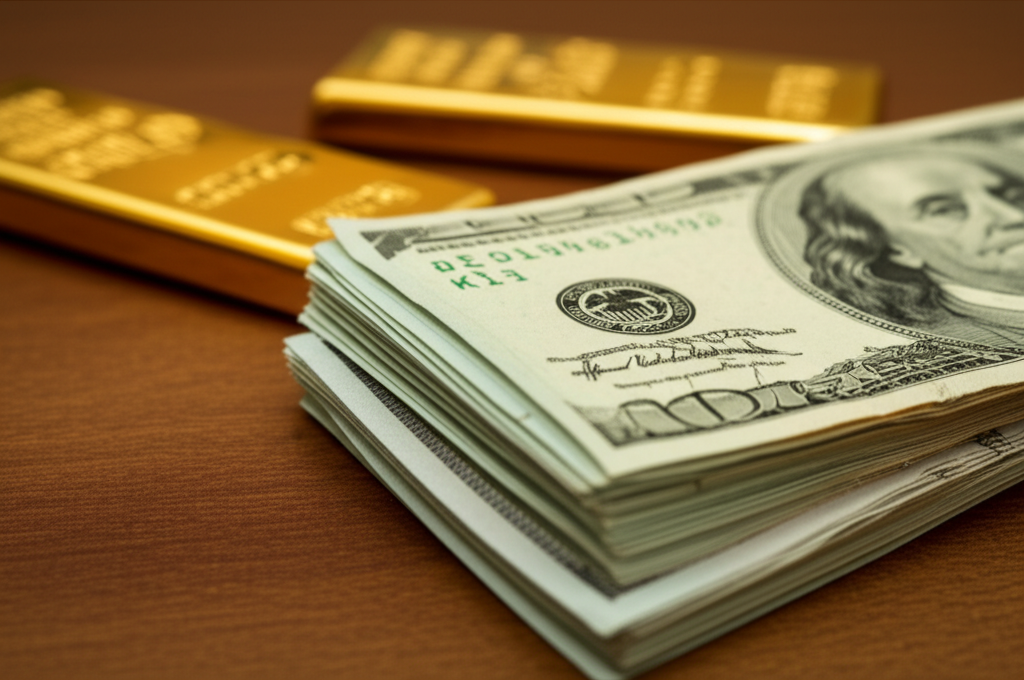US Dollar’s Back-and-Forth Hides a Bigger Gold Setup
The United States dollar, the world’s preeminent reserve currency, has been staging something of a volatile dance floor performance recently. One day it’s flexing its muscles against a basket of major currencies, propelled by robust economic data or hawkish sentiments from the Federal Reserve; the next, it’s retreating, reacting to softer inflation prints or a perceived shift towards rate cuts. This back-and-forth movement, while seemingly significant in daily trading headlines, might be a distraction from a more profound and persistent trend unfolding in the global financial landscape: a brewing long-term setup for gold. For young adults navigating the complexities of modern finance, understanding this underlying dynamic could be more crucial than tracking hourly currency fluctuations.
Recent months have seen the dollar index (DXY), which measures the dollar against six major currencies, fluctuate significantly. Factors at play include the Federal Reserve’s ongoing battle with inflation, which has seen interest rates climb to multi-decade highs. Strong US labor market data and resilient consumer spending have often given the Fed reason to maintain a tighter monetary policy, bolstering the dollar’s appeal due to higher yields. Conversely, softer inflation reports or concerns about a potential economic slowdown have fueled expectations of future rate cuts, weakening the dollar as its yield advantage diminishes. This ebb and flow creates an illusion of a perpetually contested currency, keeping market watchers on their toes and often obscuring the bigger picture.
Yet, despite this dollar dynamism, gold has demonstrated remarkable resilience, often defying traditional inverse relationships. Historically, a stronger dollar tends to make gold, priced in dollars, more expensive for international buyers, thus dampening demand. High interest rates also traditionally make non-yielding assets like gold less attractive compared to bonds. However, gold has not only held its ground but has, at times, surged to new all-time highs even when interest rates were elevated and the dollar showed periods of strength. This apparent paradox is precisely where the “bigger setup” for gold reveals itself, driven by a confluence of long-term structural factors that extend far beyond immediate currency swings.
One major catalyst for gold’s enduring strength is its role as a hedge against inflation. While central banks globally are grappling with rising prices, gold has historically served as a reliable store of value when purchasing power erodes. Investors, keenly aware of persistent inflationary pressures, are increasingly turning to tangible assets. Furthermore, geopolitical uncertainties – from ongoing conflicts to shifting global alliances – are consistently bolstering gold’s appeal as a safe-haven asset. In times of crisis, the demand for physical gold often surges, reflecting a flight to quality that transcends typical yield considerations.
Perhaps the most significant, yet often understated, driver behind gold’s formidable setup is the sustained and aggressive buying by global central banks. For several years running, central banks have been net purchasers of gold at unprecedented levels, diversifying their reserves away from traditional assets, particularly US dollar-denominated holdings. This trend reflects a broader strategic shift towards de-dollarization among some nations, as well as a desire to insulate reserves from potential sanctions or geopolitical leverage. This institutional demand creates a robust underlying bid for gold, establishing a floor that is less susceptible to the whims of daily trading sentiment or short-term dollar movements. This persistent accumulation by official institutions fundamentally alters the supply-demand dynamics in gold’s favor.
Moreover, the long-term outlook for the US dollar itself, despite its current strength, faces headwinds that could further cement gold’s position. The escalating US national debt, the potential for future quantitative easing measures, and the ongoing debate about the dollar’s long-term reserve currency status all point to scenarios where the dollar’s purchasing power could face pressure. In such an environment, gold naturally shines as an alternative, an asset with no counterparty risk and a finite supply. The dollar’s current back-and-forth, therefore, acts less like a predictor of gold’s future and more like a convenient screen behind which gold’s long-term structural tailwinds are quietly gathering force. For the savvy young investor, seeing beyond the daily headlines to grasp these deep-seated macroeconomic shifts is key to understanding where true value might be accumulating.





